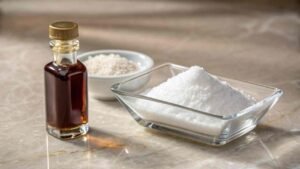
Why Is Market Forecasting Essential for Vanillin Buyers?
Tired of unpredictable va
Sodium Saccharin, commonly known as saccharin, is an artificial sweetener widely used as a sugar substitute in various food and beverage products. Due to its potent sweetness and zero-calorie content, it has been a popular choice for decades. However, its safety has been a topic of debate and scrutiny. This article aims to provide a comprehensive analysis of the safety of Sodium Saccharin.

Sodium Saccharin is a synthetic sweetener that is approximately 300 to 400 times sweeter than sucrose (table sugar). It is commonly used in products such as:
1. Discovery and Early Use
-Sodium Saccharin was discovered in 1879 and has been used as a sugar substitute since the early 20th century. Its use expanded significantly during World War I and II due to sugar shortages.
2. Regulatory Reviews and Approvals
-Over the years, Sodium Saccharin has undergone extensive regulatory review by various health and food safety organizations. Key regulatory bodies include:
1. Cancer Concerns
-Early studies in the 1970s linked Sodium Saccharin to bladder cancer in laboratory rats. However, subsequent research and reviews indicated that these findings were specific to rodents and not applicable to humans. In humans, saccharin does not show the same carcinogenic effects.
2. Current Scientific Consensus
-Numerous studies and reviews by organizations such as the National Cancer Institute (NCI) and International Agency for Research on Cancer (IARC) have found no conclusive evidence that Sodium Saccharin poses a cancer risk to humans. It is generally regarded as safe when consumed within established ADI limits.
3. Metabolism and Excretion
-Sodium Saccharin is not metabolized by the human body. It is excreted unchanged in the urine, which minimizes the risk of bioaccumulation and long-term adverse effects.
4. Other Health Concerns
-Some studies have explored potential links between artificial sweeteners and metabolic disorders, such as diabetes and obesity. However, the evidence is inconclusive, and Sodium Saccharin is considered safe for consumption by both diabetic and non-diabetic individuals within the recommended intake levels.
1. Acceptable Daily Intake (ADI)
-The ADI for Sodium Saccharin, as set by JECFA, is 0-5 mg per kilogram of body weight. This limit ensures that individuals can safely consume products containing Sodium Saccharin without exceeding levels that have been tested and deemed safe.
2. Labeling and Consumer Awareness
-Products containing Sodium Saccharin are required to list it on the ingredient label. Consumers are encouraged to be aware of their intake from various sources to stay within the ADI.

Tired of unpredictable va

Is standard vanillin not

Are your customers asking

Are you tired of paying h
Extensive scientific research and regulatory reviews have established that Sodium Saccharin is safe for consumption within the acceptable daily intake limits. While historical concerns about its safety led to caution and further investigation, current evidence supports its use as a non-carcinogenic, non-metabolized artificial sweetener. Consumers can confidently use products containing Sodium Saccharin, provided they adhere to recommended guidelines.
WhatsApp us
We will contact you within 1 working days